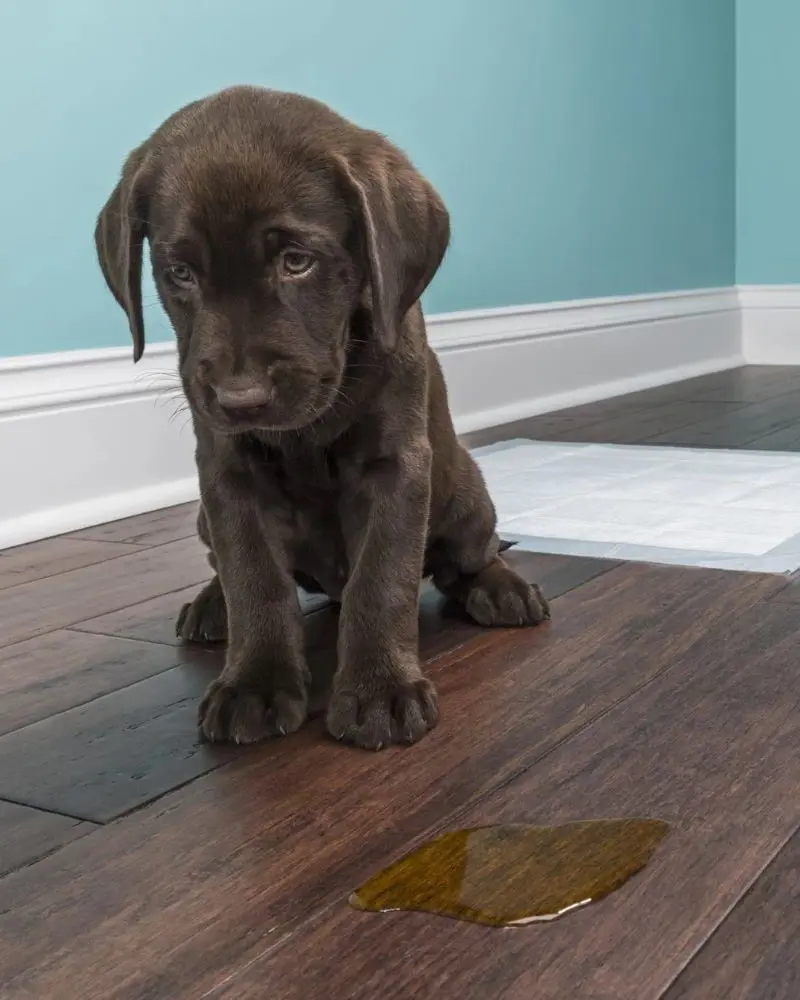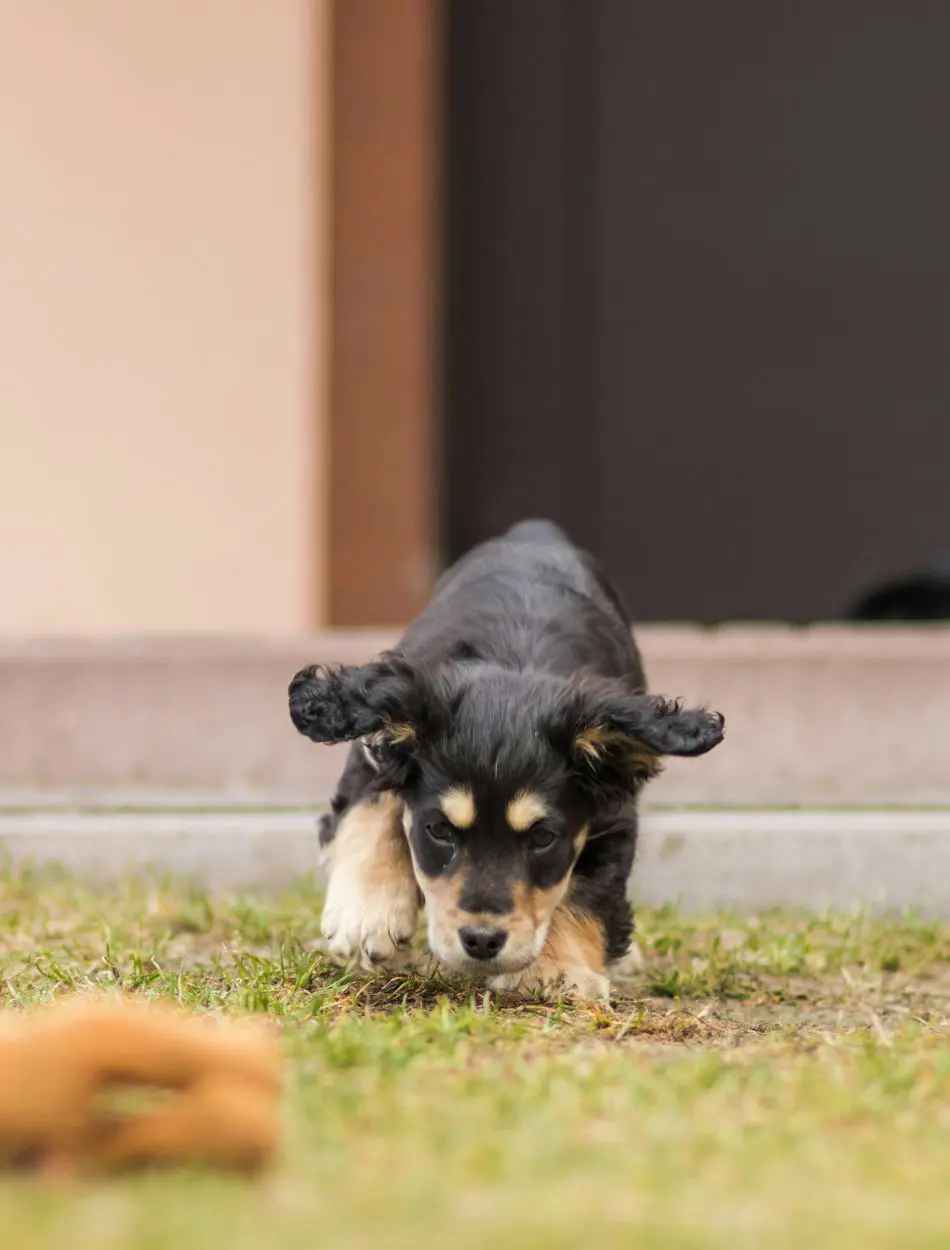18 Signs Of A Dogs Broken Leg
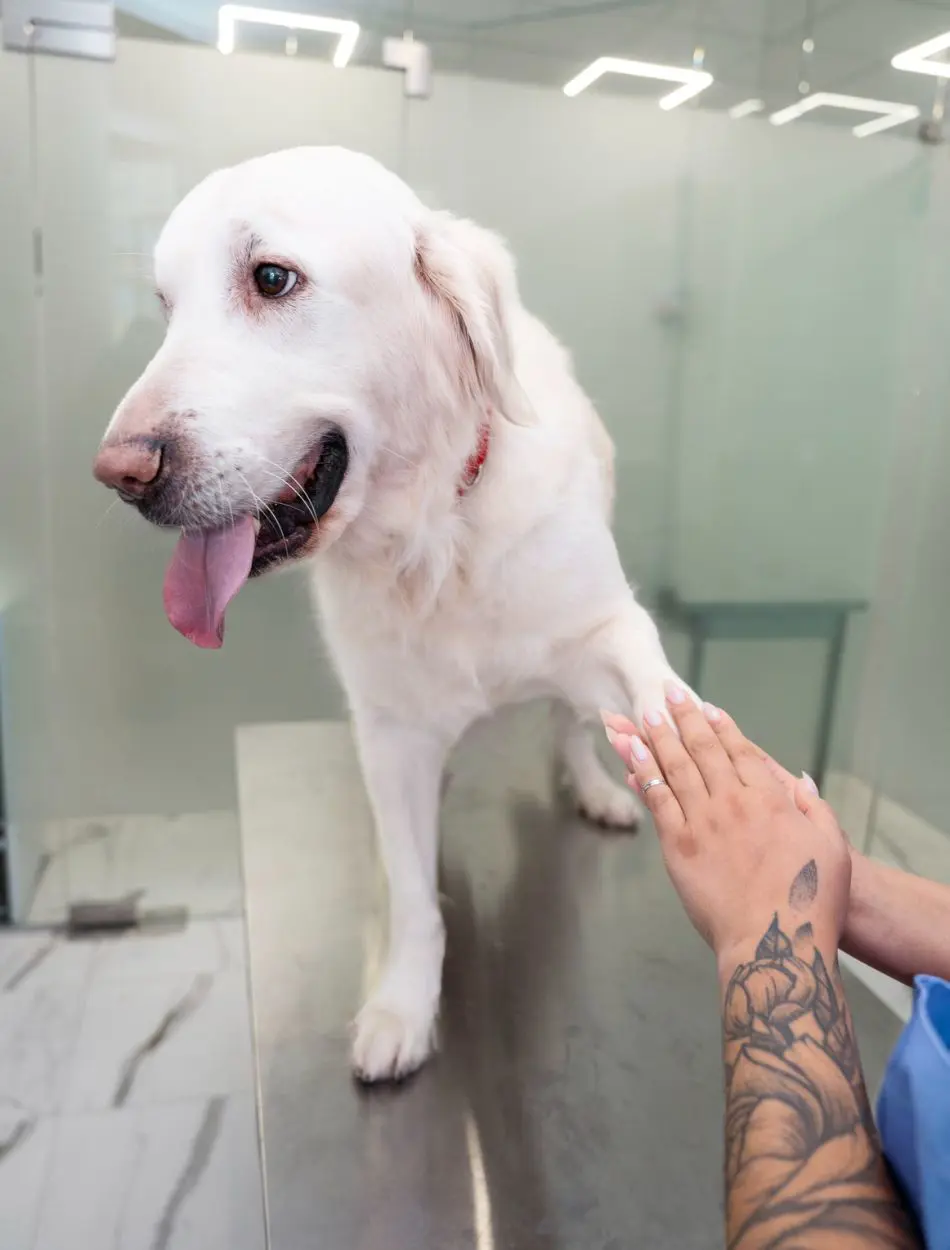
A dog's broken leg isn't always the most painful experience but additionally an unexpected disruption to their energetic way of life. Whether due to an unexpected coincidence or rough play, quick intervention is essential to prevent long-term complications and ensure easy healing.
With proper care and well-timed intervention, maximum dogs can get better absolutely, getting back to their energetic selves in no time.
1. Limping Or Lameness

One of the clearest signs of a broken leg is limping, which can range from slightly favoring to refusing to bear weight on it. Most often, the change in pace is due to the pain associated with the fracture.
Sometimes, dogs won't even want to use the limb but will hop around on three legs simply to avoid pain. In other instances, the limp may initially be very slight but progressively worsen with the injury.
Since your dog remains limping after more than a day, especially after an accident, fall, or extreme exercise, you must consult a vet. What happens is that even a minor limp may get worse if it isn't treated, and this may result in muscle wasting or joint problems, which would delay recovery.
2. Swelling Around The Leg
Swelling may be considered the more obvious and common appearance of trauma, especially in the case of a broken leg. When the bone breaks, the surrounding tissues react with inflammation, which presents noticeable swelling. This can also make the leg look larger, feel warmer to the touch, and can also tend to become tender or sensitive.
Sometimes the swelling occurs suddenly immediately after the injury, while at other times it gradually develops several hours, or even after a day. The most important thing, in case of swelling of your dog's leg, especially after some sort of accident, is to keep them as calm and immobile as possible.
If your dog tries to move or walk on that swollen leg, it could be a worse injury, leading to further complications like damaged tissues and poor circulation.
3. Bruising On The Leg
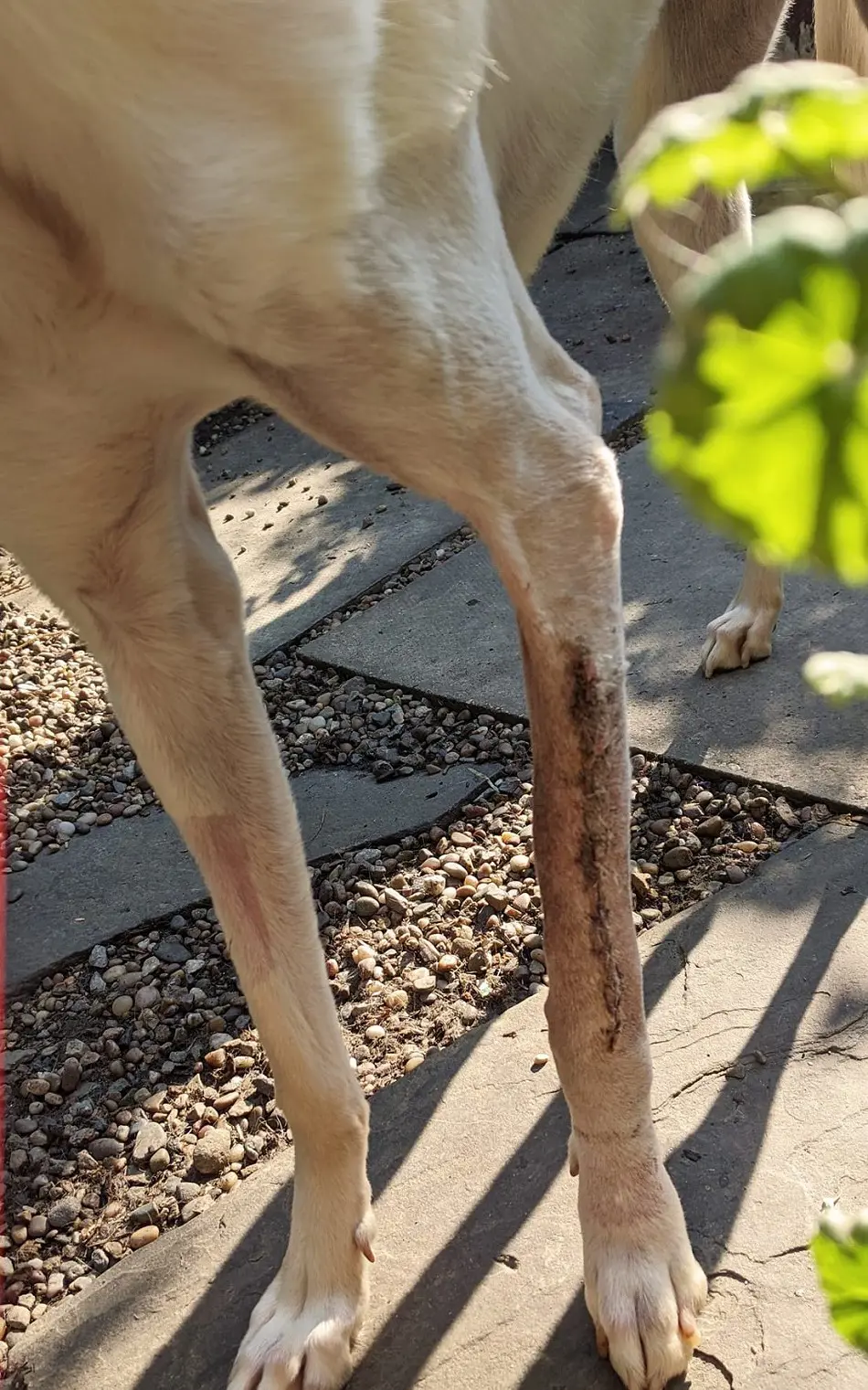
Bruising of the skin indicates internal bleeding and tissue damage, which usually occurs with fractures. They are caused by the rupture of blood vessels under the skin due to the pressure from an injury. You may not directly observe the bruising through the thickness of your dog's coat, but you can feel soreness and observe the development of swelling in the affected area.
Bruising itself may not determine a fractured bone, but combined with other symptoms such as limping or swelling, it signals a more serious injury that requires professional evaluation. Overlooking these symptoms might make treatment unnecessarily belated and could also bring about complications such as internal bleeding or infection.
4. Unusual Positioning Of The Legs
There is, of course, little doubt that unnatural positioning of the legs will be dead giveaway signs of a fracture or heavy dislocation. You might witness your dog holding their leg in some sort of twisted, bent, or otherwise unnatural rigidity that shows that the bone is out of alignment.
Often, the leg would appear to be loose, or your dog wouldn't be able to use it in its normal position locomoting or sitting. Usually, such unnatural positioning is accompanied by obvious pain and avoidance of limb use.
In such cases, it requires immediate treatment by a veterinarian. The sooner the treatment, the lower the chance of further damage to the bone and its surrounding tissues.
5. Trouble Standing Or Walking
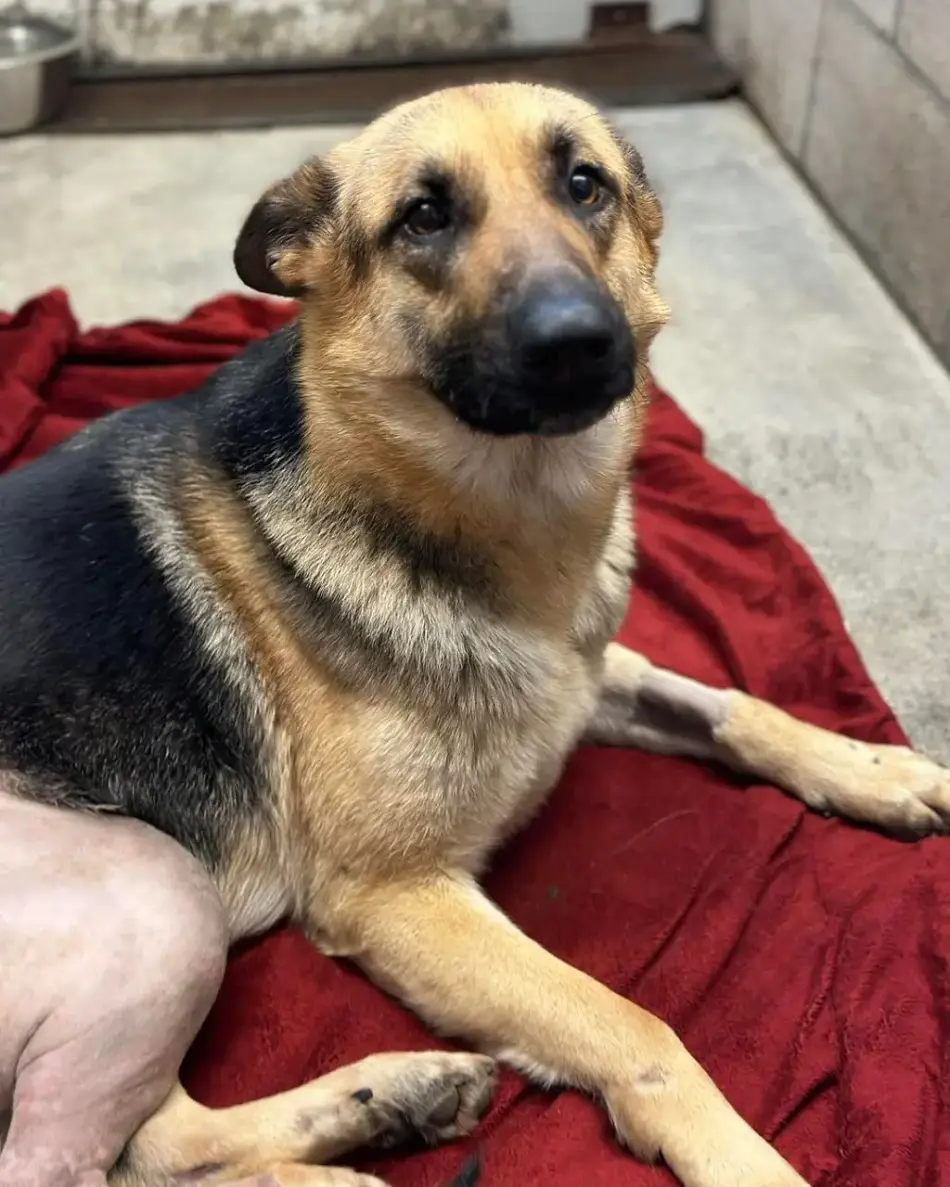
A dog with a fractured leg may be unable to stand or walk, especially after rest periods or even sometimes after some periods of exercise. The pain of the fracture prevents weight bearing on the affected limb, favoring the other limbs. You might find your dog trying to get up but falls back down because of the pain or instability in that broken bone.
A sudden reluctance or inability to stand or walk comfortably is a red flag for a potential fracture. Immediate veterinary care is necessary to prevent the injury from becoming worse, to institute appropriate pain management, and to begin healing strategies.
6. Visible Bone Or Open Wound
This is the case if there is a severe fracture, it normally protrudes from your skin and lacerates it. It is also normally known as a compound or open fracture. It is serious and, hence, it is good to get your dog to a veterinary doctor as fast as possible.
Your dog will be in excruciating pain, with a protruding bone from his skin bleeding due to a wound or swelling. Allowing for bone fractures, the intensity of the injury is severely damaging to tissues, muscles, and skin.
If your dog has a compound fracture, then his affected leg must be kept stabilized, and he should avoid movements as much as possible until you can seek veterinary care.
7. Dragging The Leg
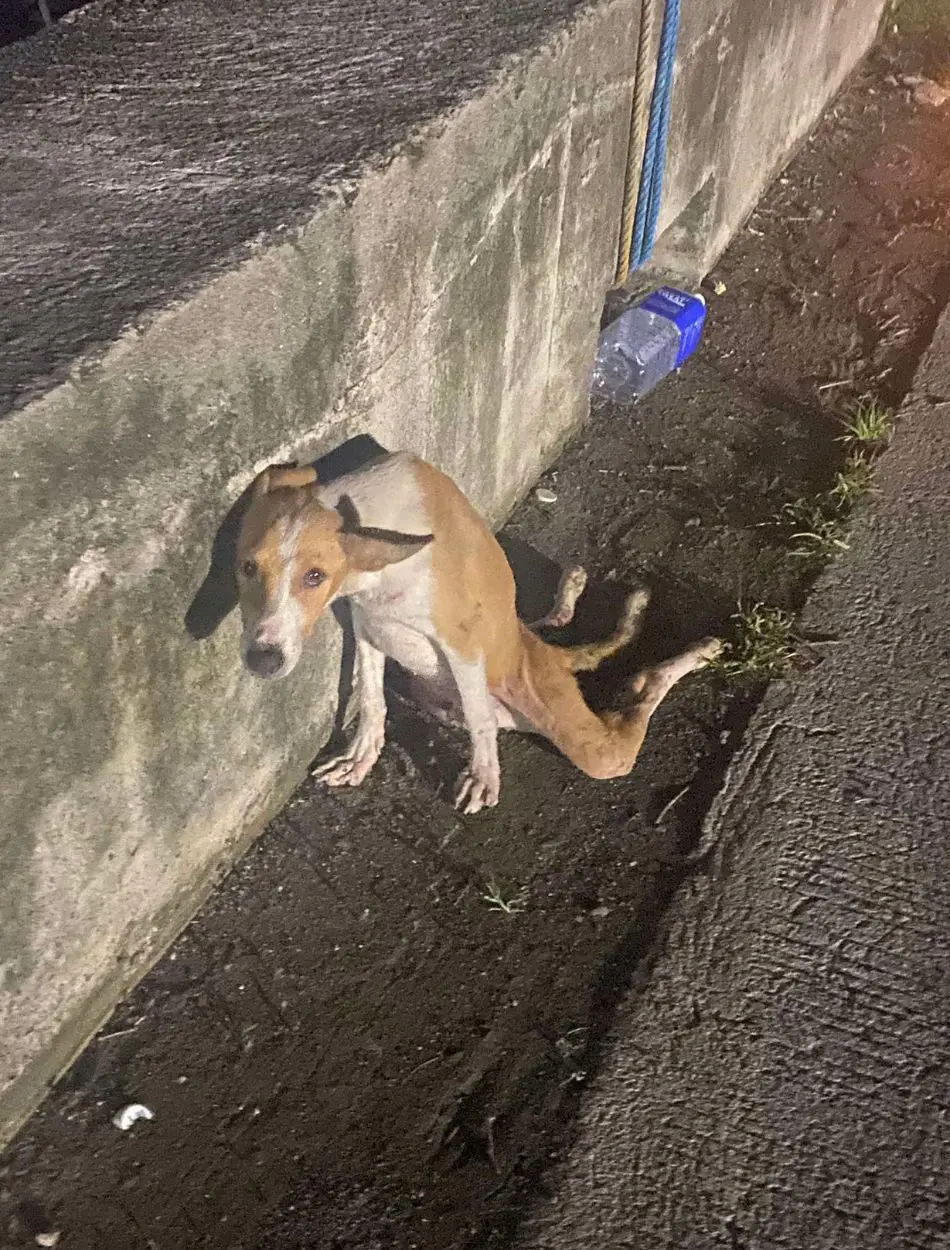
A fractured leg allows the dog to start walking or moving about in whatever way, dragging the affected limb. This is because, over time, it will either become very painful or too weak and the dog shall have no option but to drag it. This kind of dragging has the potential to bring about further injury with time through lacerations, overstretching of the muscles, or complications of the fracture.
If you find your dog continuously dragging one of their legs. This is serious and needs to be taken to a vet right away. The sooner this is treated, the less likely it is that the injury will further deteriorate and help the quicker the healing process can start.
8. Unable To Support Weight
A very specific sign that your dog has a fracture is if they refuse to bear weight on one of their legs entirely. When an injury occurs, an instinctual response by dogs is to avoid placing pressure on the injured limb to minimize further pain. You'll notice your dog completely lifts the injured leg off the ground and attempts to move around using just their three uninjured limbs.
While other injuries such as sprains can also cause non-weight-bearing behavior, the reluctance to use the leg will commonly indicate a fracture. This requires medical attention with as little delay as possible to prevent further injury or complications. Additional time spent not using the leg can result in muscle loss or improper healing.
9. Reluctance To Move
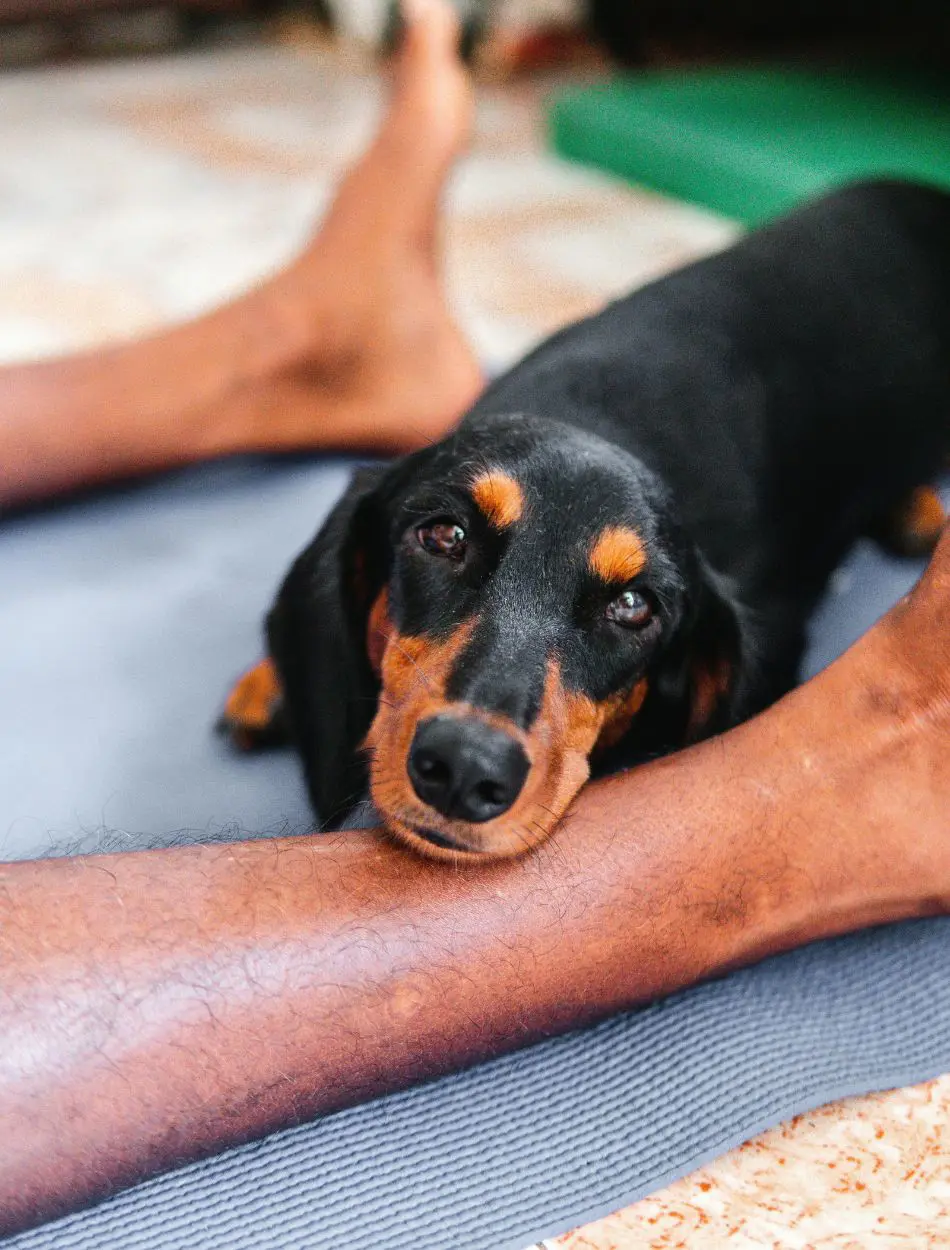
A dog with a broken leg might become unusually still or lethargic, avoiding any movement that would worsen the pain. Things such as running, playing, and even walking-your dog's favorite things become extremely painful. Your dog might just keep lying around as much as possible, moving only when necessary, which is very contrasting to normal behavior.
If your dog suddenly does not want to walk and is limping or swelling among other symptoms, he must be immediately taken to a veterinarian. This will help in the early management of the injury, managing his pain well, and allowing the fracture to heal correctly.
10. Reluctance To Jump Or Climb Up Stairs
Great stressors such as jumping and running upstairs to the dog's legs, when one is fractured, become painful and almost impossible. Stopping or reluctant to jump and run up the stairs, dogs that have fractured a leg often stop or show reluctance in doing so. This can easily be noticed if your dog has been very eager to jump onto the couch or climb the stairs.
So if they're suddenly wary of them or avoiding them altogether, especially after some sort of trauma-then that's a pretty good indication that something's amiss. A veterinarian when consulted will be in a position to determine the nature of the injury and advise accordingly.
11. Whining Or Crying

Whining, crying, or yelping are fairly overt signs that your dog is in pain. A dog with a broken leg will complain much more, especially if the leg is touched or they try to rise. Even the toughest of dogs, who usually tolerate pain quite well, may be quite vocal when attempting to manage the sharp pain of a fracture.
If whining or crying persists, more so after an injury, it is time to seek a vet. Prompt attention to pain not only ensures your dog's comfort but also saves your dog from further aggravation of the injury.
12. Unusual Behavior Or Aggression
Pain can lead to considerable changes in the behavior of dogs. A normally friendly and calm dog may become snappy, growling, or snapping upon touching most, especially in the area near the injured leg. This sudden aggression isn't a sign of a change in temperament but rather in response to the intense pain they are enduring.
Unusual aggression or defensiveness after an injury is a good reason to get your dog in for a look-over by the veterinarian. By diagnosing and treating the source of pain, they will be themselves in no time.
13. Licking Or Chewing The Leg

Licking or chewing uncontrollably on one particular leg is surely a sign that your dog is in pain. Dogs naturally lick painful areas as a form of soothing themselves. If your poor dog spends an inordinate amount of time with one leg and refuses to leave it alone, it may signify an underlying problem such as a fracture.
An occasional lick is not a problem, but excessive licking and chewing may traumatize the wound and it will then become infected. A veterinary check will determine if there is a fracture, and prevent your dog from making the condition worse.
14. Pale Gums
Pale gums are a sign of going into shock, which may happen after a traumatic injury such as a broken leg. At this point, in such a situation, the blood circulation becomes very slow and the normal color of the gum changes to pale or white. This condition is quite dangerous and requires urgent attention, as the body tissues are debarred from getting enough oxygen.
If your dog's pale gums were due to some injury in particular, with symptoms like lethargy or pain, you need to take him to a vet as soon as possible. It's for their sake.
15. Loss Of Appetite

Pain and trauma from a broken leg can make your dog show no interest in food whatsoever. Lack of appetite is commonly one of the very first warning signs that something is wrong, as dogs in pain may become too uncomfortable to eat. You might also notice during this time that your dog becomes more withdrawn or less active.
If your dog suddenly becomes less interested in food, especially after an accident or injury, then it is required to take the pet to a vet. Quickly resolving the injury will keep your dog strong and well-fed as they go through their healing process.
16. Less Playful
A fractured leg can make a dog less keen on playing, or even doing other physical things they may have enjoyed previously. The pain and discomfort brought on by a fracture may make running, jumping, or even walking too hard. If your normally energetic and playful dog becomes indifferent to their favorite activities, that's a sign they might be in pain from a leg injury.
This change in behavior should trigger a visit to the vet, especially if this is in conjunction with other signs including limping or swelling. Early treatment can help reduce discomfort so that your dog will be back to its old self in no time.
17. Excessive Panting
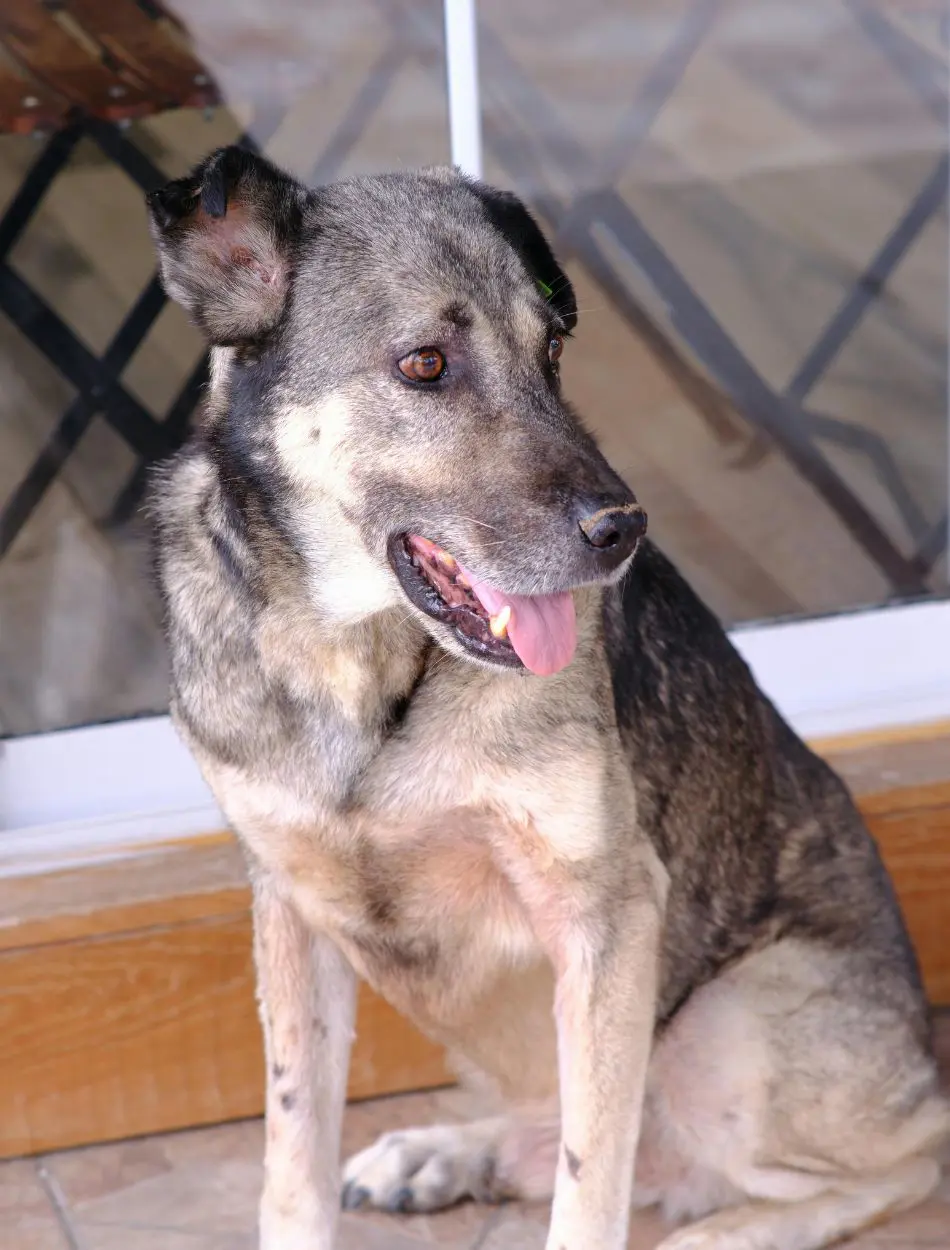
Heavy panting or rapid breathing can be a sign of stress too. All dogs are panting as a natural way to help regulate their body temperature when it's hot, but this rate is often much higher with a broken leg. As well, you will see your dog panting while at rest or in closed areas and that would indicate something may be wrong.
If you think that your dog is breathing unconventionally, particularly after an injury of some kind, then he needs to be seen by a veterinarian. Continuous panting signals that your dog is in constant pain or some other sort of distress for which the veterinarian will soon visit.
18. Shaking Or Trembling
In response to pain, fear, or anxiety, one direct reaction to the body is shaking or trembling. It can be a symptom of many things and one of the symptoms is that your dog has a broken leg. A broken bone can hurt so much that shaking from the pain as your dog may not be able to control it, especially when someone attempts to move or touch the affected leg.
This kind of shivering signifies a very anxious dog that requires help as soon as possible. Your dog will start shaking or trembling after an injury, that's when you need to go see a vet. The treatment of injury and pain should be able to reduce their suffering, as well as trembling.
Immediate Response To Dog Broken Legs
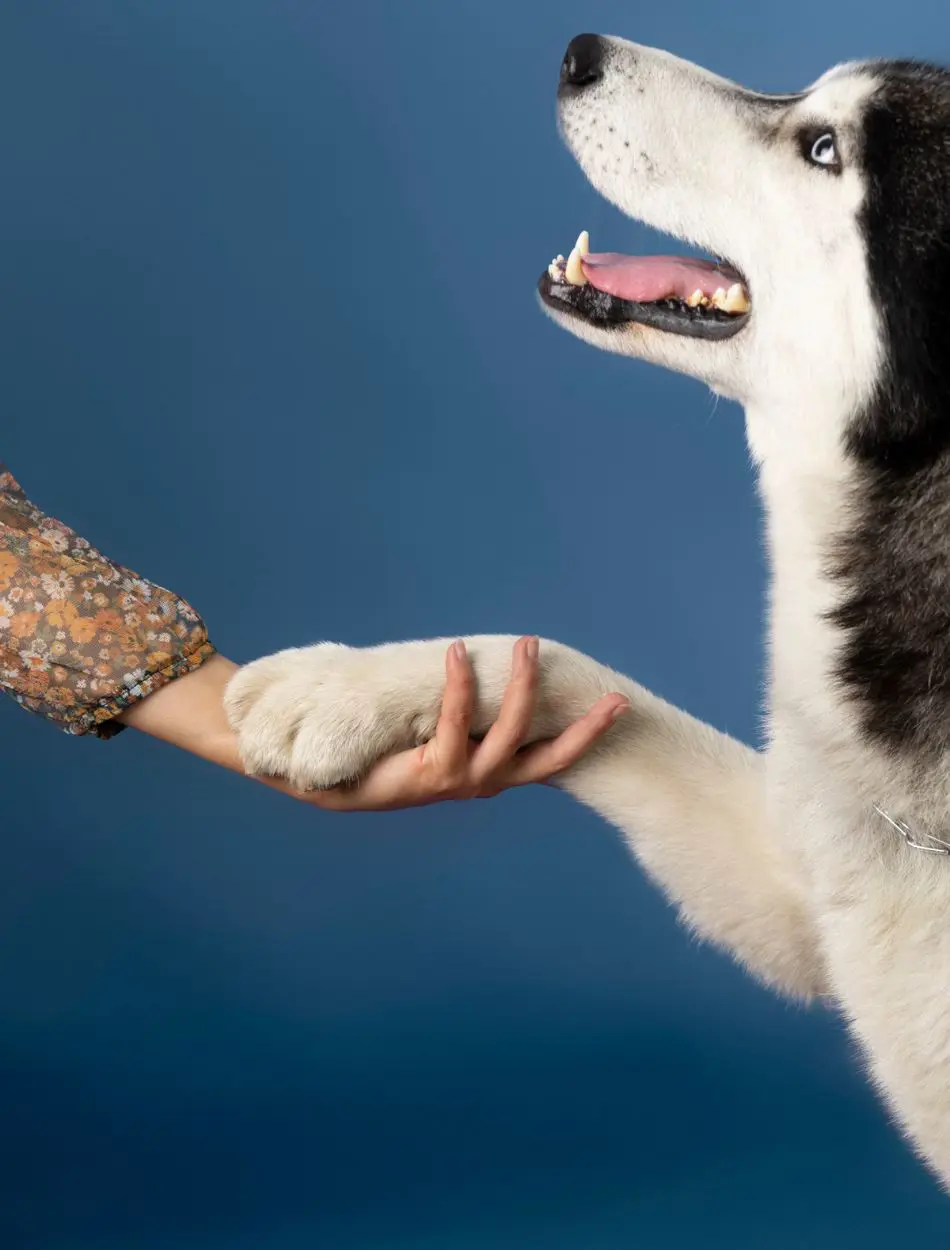
A prompt and proper response from your end will avoid aggravating the condition or further complicating it in case your dog breaks his leg.
Calm Your Dog
Your priority is to keep your dog as calm as possible. A panicked dog can end up thrashing around and making the injury even worse. Speak softly to them, trying to make the environment as quiet and soothing as possible.
If they appear to be in some kind of pain or shock, try to keep their movements limited to prevent exacerbating the injury.
Don't Move the Leg
Do not attempt to move the injured leg or even manipulate it in any manner. This may further harm bones, muscles, and blood vessels.
Also, never try to straighten the bone yourself, which may result in further pain and complications.
First Aid Measures
Immobilize The Leg
Gently immobilize the injured leg with a makeshift splint if you feel this is comfortable to do. Take a fairly rigid object-a ruler or a piece of wood with a soft substance, such as a towel or bandage and fasten the splint on with gauze or a bandage lightly to stabilize the leg, without binding it too tight.
Control Bleeding
Control any bleeding carefully by applying gentle pressure on the wound with a clean, dry cloth or bandage without applying much pressure on the leg. If severe bleeding occurs, take immediate action and seek urgent veterinary assistance.
Recent posts
Dogs
Why Do Dogs Pee in the House? 10 Causes And Solutions
Uncontrolled peeing inside the house is usually perceived as a sign of a poorly-disciplined dog. However, it may not always be true as the canine could be suffering from a medical issue or cognitive decline. And, getting made is not the solution as y...
Dog Sleeping Positions And Their Meanings
The diverse sleeping dog positions of our furry companions unveil a fascinating tapestry of behaviors and emotions in the canine realm. From the classic Curler to the enigmatic Superman, each posture conveys a unique message about a dog's well-being ...
Dog In Heat: When It Happens And How Long Does It Last
A female dog will get to the phase of reproduction known as the heat cycle if she has not been spayed. If you have an unspayed female dog, it's vital to understand the stages of her heat cycle. During heat, a canine's conduct may additionally c...
15 Causes of Dog Losing Hair
Occasional hair loss and shedding is a natural physical process in dogs. Seasonal shedding helps remove dead and excessive hair from their body. But, when a dog starts losing excessive hair, it can be a terrifying sight for pet owners. Often, dog par...
18 Signs A Dog is Dying
Recognizing the signs that a dog is dying can be heartbreaking, but it's far more essential to offer comfort in their final days. The signs consist of changes in behavior and constant hunger indicating that it may be time to say good-bye. Owners who...
15 Reasons Why Dogs Eat Poop And How To Stop It
Dogs sometimes engage in odd and unhealthy behaviors, along with ingesting their poop or that of different animals. This habit may be concerning and disgusting for any pup owners. This habit has many motives, however, the secret is locating eff...
